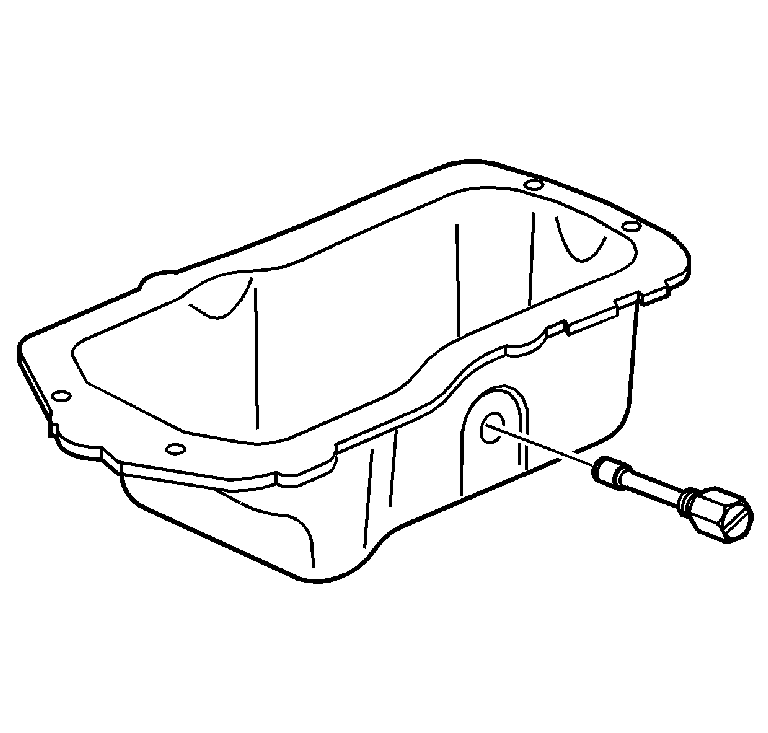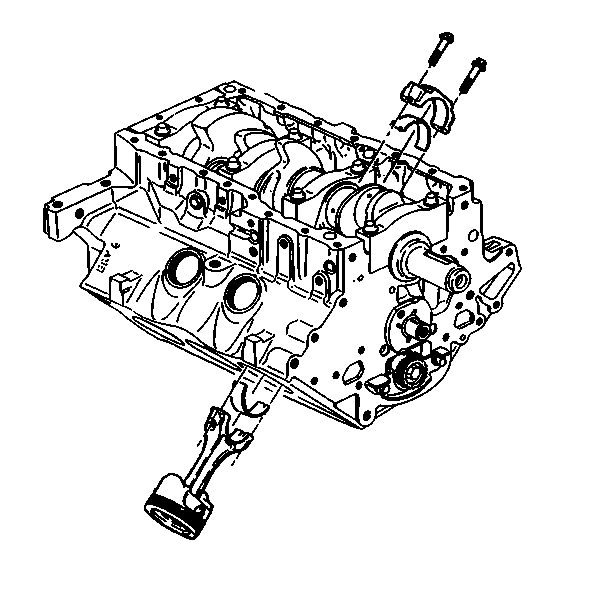Removal Procedure
Tools Required
| • | J 36660-A Torque Angle Meter |
| • | J 8037 Piston Ring Compressor |
| • | J 41507 Connecting Rod Guide |
- Disconnect the negative battery cable.
- Remove the cylinder head. Refer to Cylinder Head Replacement .
- Remove the oil level sensor.
- Remove the oil pan. Refer to Oil Pan Replacement .
- Remove the oil pump pipe and screen. Refer to Oil Pump Suction Pipe and Screen Assembly Replacement .
- Mark the connecting rod cap and rod for proper reassembly.
- Remove the connecting rod bolts.
- Remove the connecting rod cap.
- Remove the piston and connecting rod assembly.
Caution: Unless directed otherwise, the ignition and start switch must be in the OFF or LOCK position, and all electrical loads must be OFF before servicing any electrical component. Disconnect the negative battery cable to prevent an electrical spark should a tool or equipment come in contact with an exposed electrical terminal. Failure to follow these precautions may result in personal injury and/or damage to the vehicle or its components.

Notice: If there is a pronounced ridge at the top of the piston travel, the ridge must be removed with a ridge reamer before the piston and connecting rod assembly are removed. Applying force may break the piston rings or damage the piston.

Installation Procedure
Tools Required
| • | J 36660-A Torque Angle Meter |
| • | J 8037 Piston Ring Compressor |
| • | J 41507 Connecting Rod Guide |
- Install the piston rings to the piston. In order to provide an effective compression seal, the ring gaps must be staggered.
- Turn the crankshaft to bottom dead center.
- Lubricate the cylinder with oil.
- Install the connecting rod bearing.
- Install the piston and the connecting rod assembly with the ridges toward the front of the engine. Use the J 8037 .
- Raise the vehicle. Refer to Lifting and Jacking the Vehicle in General Information.
- Use the J 41507 in order to guide the connecting rod through the cylinder.
- Install the connecting rod cap.
- Install the connecting rod cap bolts.
- Install the oil pump pipe and screen assembly. Refer to Oil Pump Suction Pipe and Screen Assembly Replacement .
- Install the oil pan. Refer to Oil Pan Replacement .
- Install the oil level sensor.
- Install the cylinder head. Refer to Cylinder Head Replacement .
- Connect the negative battery cable.

Notice: Guide the lower connecting rod end carefully to avoid damaging the crankshaft journal.
Notice: This bolt is designed to permanently stretch when tightened, and therefore MUST be replaced anytime it is removed. The correct part number fastener must be used to replace this type of fastener. Do not use a bolt that is stronger in this application. If the correct bolt is not used, the parts will not be tightened correctly. The system or the components may be damaged.
Notice: Use the correct fastener in the correct location. Replacement fasteners must be the correct part number for that application. Fasteners requiring replacement or fasteners requiring the use of thread locking compound or sealant are identified in the service procedure. Do not use paints, lubricants, or corrosion inhibitors on fasteners or fastener joint surfaces unless specified. These coatings affect fastener torque and joint clamping force and may damage the fastener. Use the correct tightening sequence and specifications when installing fasteners in order to avoid damage to parts and systems.
Tighten
Tighten the connecting rod cap bolts to 27 N·m (20 lb ft).
Use the J 36660-A
in
order to rotate the bolts an additional 50 degrees.
